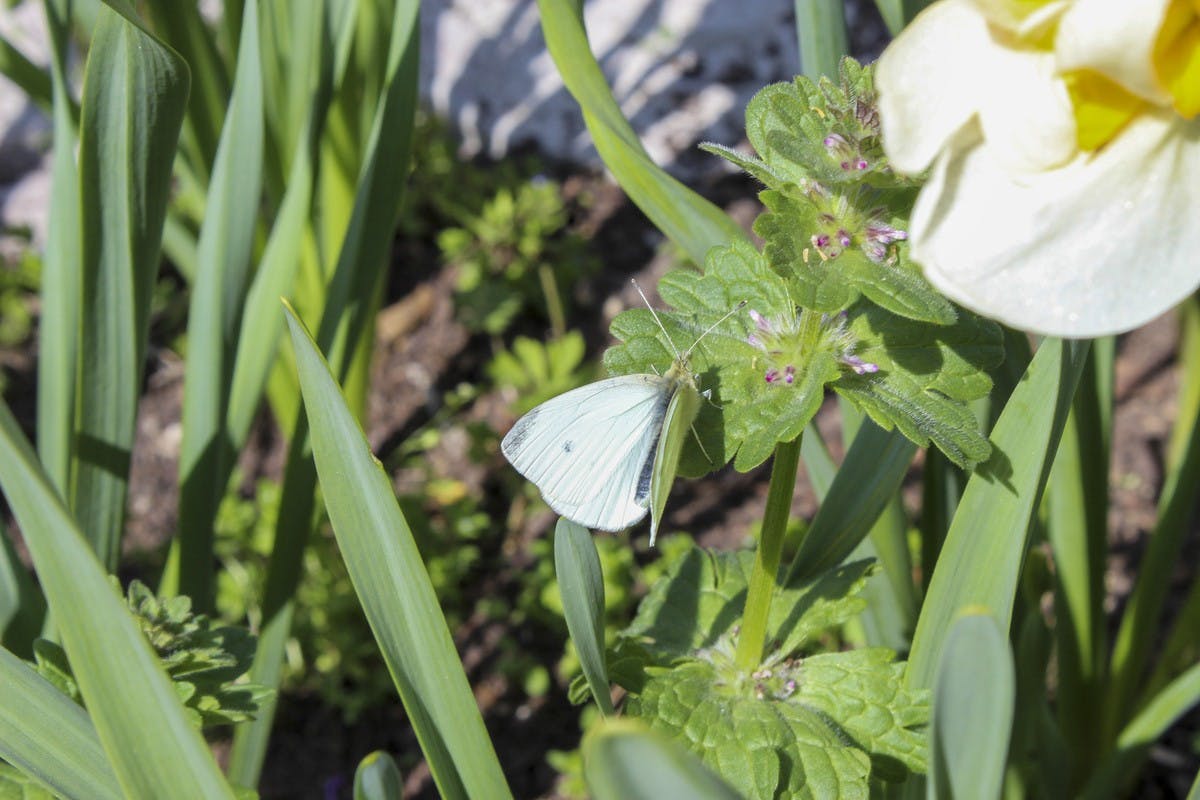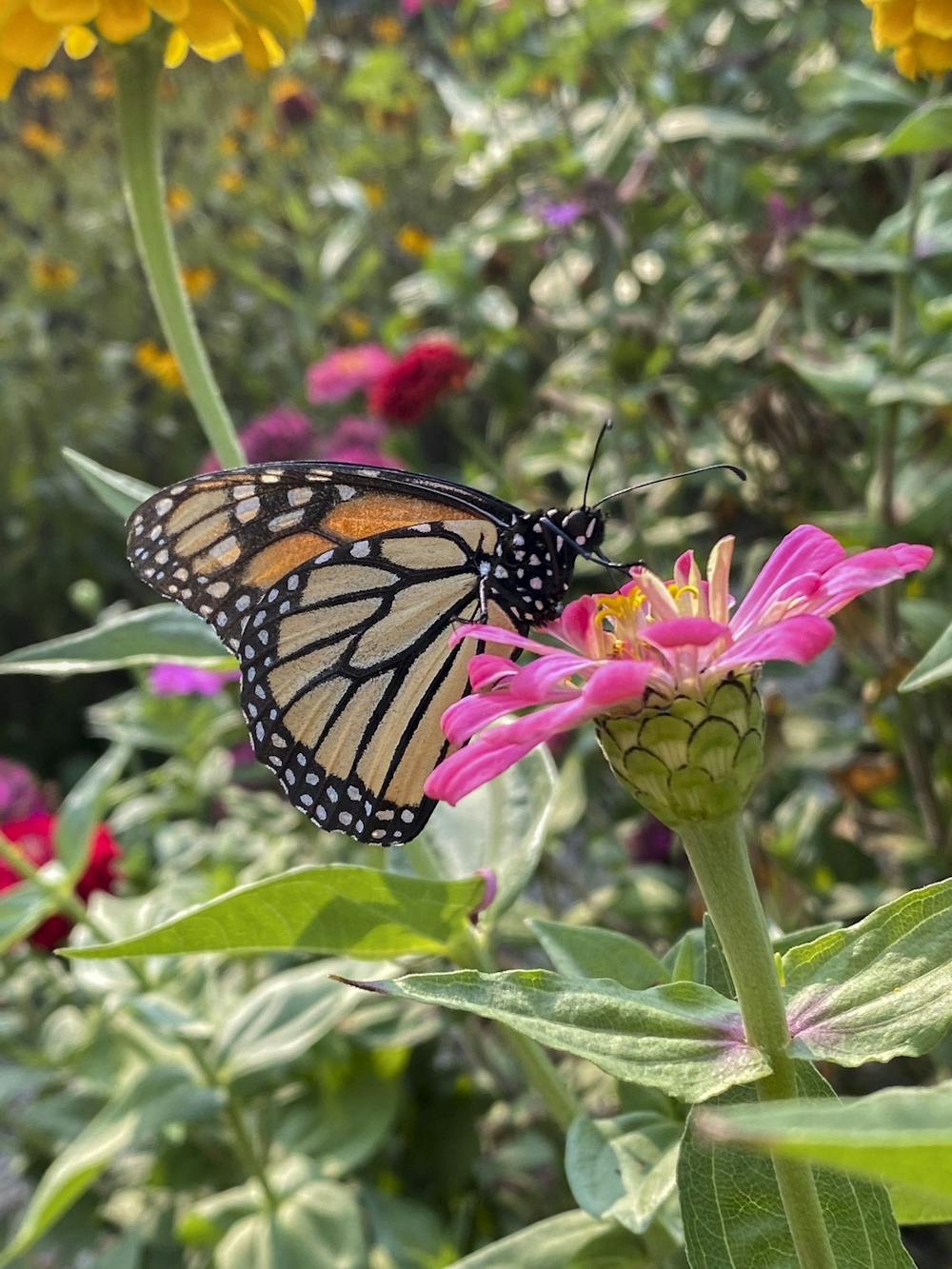As spring comes into full bloom, plants and flowers around Oxford have exploded into color. For students with allergies, it’s a nightmare. For everyone else, it’s a welcome reprieve from the harrowing ordeal that is an Ohio winter.
For the Miami University botany department, however, spring means the re-emergence of its passion project for the past five years: butterfly gardens.
The botany department has overseen the creation of four different butterfly gardens on campus. Pearson Plaza, Upham Hall bluestone gardens, Recreational Sports Center and the natural areas bird blind butterfly garden are all home to butterfly gardens.
The butterfly gardens, which encourage students to practice sustainability through environmental restoration, house local plants that provide vital nutrients and habitats for local animal species. Birds, butterflies, hummingbirds, bees and other insects all rely on the gardens for sustenance.
Ella Comerford, a junior individualized studies and environmental earth science double major who serves as president of Miami’s Botanical Society, believes the gardens can start a crucial conversation about sustainable landscaping.
“I think it’s really cool that we’re starting to incorporate native gardens on campus, because [Miami] puts a lot of money into landscaping,” Comerford said. “So it’s really important that we have something that’s useful, environmentally, on campus.”
While grass makes up the majority of the greenery on campus, the constant upkeep and maintenance required to keep it looking tidy drains resources that might otherwise go to native plants. Fertilizer and other pesticides also affect natural plant life and animal populations due to runoff.
“Hopefully, we will start to transition into using that money to plant natural gardens,” Comerford said. “The university is always trying to please people, because that’s where a lot of funding comes from. So as people start to push for natural gardens on campus, that’s the direction the university will move in.”
While the butterfly gardens are a step in the right direction, not all aspects of the gardens are as useful as they seem. Unlike what is listed on the butterfly gardens website, not all of the plants hosted in the gardens are native to the Oxford area.
“Some of their species aren’t fully native, like the butterfly bush,” Comerford said. “It doesn’t actually supply a great home for caterpillars, so that’s a little bit disappointing. But they’re definitely a start.”

Some of the plant species aren't native to Oxford but still help promote biodiversity.
Enjoy what you're reading?
Signup for our newsletter
Steven Sullivan, director of the Hefner Museum of Natural History in Upham Hall, echoed Comerford’s sentiments on the importance of natural gardens on campus.
“The expectation of a good lawn is a grass lawn,” Sullivan said. “It’s not a matter of preference, it’s a matter of what’s seen as good and what’s seen as not good. So for [Miami] to encourage natural gardens like this is refreshing to see.”
Sullivan, who came to Miami in 2017 from the Chicago Academy of Sciences, specializes in rural ecology. Though he understands the importance of grass lawns, Sullivan believes the university should utilize unused space on campus for natural gardens.
“It’s important that we have grass quads for students to use, nobody’s denying that,” Sullivan said. “That’s important. But think of all the grass space you see that isn’t used by students — why couldn’t that be turned into a natural garden?”
Zachary Ellia, a first-year botany and geology double major, hopes the butterfly gardens will make students more conscious of the ecosystems around them.
“They’re a great way to make students aware of the impact we have on the environment and may even convince people to live more sustainably,” Ellia said. “We live in a beautiful campus, but sometimes people take that for granted.”
While Ellia knows asking students to move away from grass lawns is a large step, he believes the butterfly gardens are the first step toward sustainable landscaping.
“Spreading awareness about how we can help protect our environment by living sustainably is a step in the right direction,” Ellia said. “By using the butterfly gardens, we’re promoting spaces that will not only make the campus look better but also promote biodiversity.”




